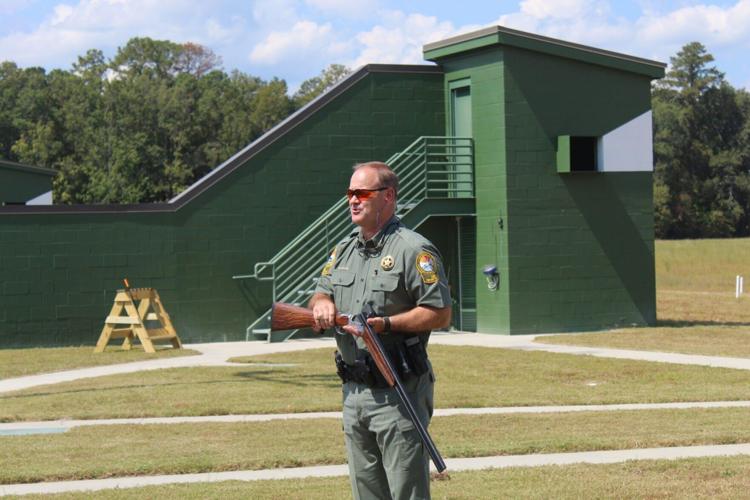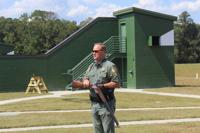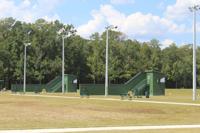EASTOVER — The first shots at South Carolina’s newest public shooting range fired Friday.
State officials put $750,000 into building the range, which has been under construction since 2022. Federal funds from the Wildlife Restoration Program, which is meant to preserve and manage wild animals, made up the remaining $5.7 million, according to the natural resources department.
The Boyd Foundation, a Columbia-based nonprofit, chipped in another $200,000 for equipment, according to the department.
The 780-acre range will be open from 9 a.m. to 7 p.m. Tuesdays through Saturdays and 1 p.m. to 5 p.m. Sundays. Every 30 clay pigeons a person shoots will cost $5, according to the department.
The shooting range, about 25 miles south of Columbia, is meant to be a space for new shooters to learn the sport, for longtime marksmen to practice their skills, and for educational groups to take lessons, Mullikin said.
The nearby Wateree Shooting Range will transition to offering only sporting clays, making the new range the only one of the seven state-operated shooting ranges to offer skeet and trap shooting.
The new State Skeet and Trap Facility is also large enough to host the state’s skeet shooting tournament. High schoolers will use it for competitions, while middle schoolers will compete at Wateree.
Around 760 students across the state participate in the Department of Natural Resources’ Scholastic Clay Target Sports program, which culminates in championship tournaments, according to the agency.
Ten years ago, Maj. Billy Downer, who oversees the department’s staff operations, visited the property for a hunt with other veterans and military families.
While firing on the shooting range of what was then private property, he asked Michael Love, whose family had owned the property for years, “What are you going to do with this place?”
“I don’t know,” Love replied.
The two started brainstorming, and Love decided he wanted to see the property become a publicly owned shooting range, Downer said. The state bought the land the next year.
The Love family’s legacy will live on as part of the shooting range’s name, Downer said.
“I hope and pray we’re going to share that legacy with thousands of young people and other people in South Carolina that can enjoy this place,” Downer said.
Safety and community are foremost goals at the state’s shooting ranges, Mullikin said. He envisions the range as a place where parents can bring their children to learn the basics of handling and shooting guns. More experienced hunters will be able to give pointers to people who are just starting out, Mullikin said.
Trained range safety officers will monitor the eight fields, and a classroom will allow staff to teach 4H clubs, women’s hunting groups and any other organizations interested in learning the proper and safe way to handle guns, Mullikin said.
“We’ll create a culture where safety is normal, mentorship is normal, and stewardship is a standard,” Mullikin said.
For children, especially, the range represents a way of getting outdoors and finding a hobby not involving screens, said Lt. Gov. Pamela Evette.
The state’s public ranges are generally cheaper than private ranges, according to the natural resources department.
For example, the National Wild Turkey Federation charges $60 for 100 clays at its shooting facility in Edgefield.
“We need to get our kids out of the house and away from video games and putting their phones down and getting back to fishing and hunting and shooting,” Evette said.
State-owned shooting ranges
- Twin Ponds Rifle Range in Charleston County
- Palachucola Shooting Range in Hampton County
- Belfast Shooting Range in Laurens County
- Pickens County Shooting Range in Pickens County
- Wateree Shooting Range in Richland County
- State Skeet and Trap Facility in Richland County
- James O. Thomason Firing Range in Spartanburg County
Source: Department of Natural Resources
SC Daily Gazette is part of States Newsroom, a nonprofit news network supported by grants and a coalition of donors as a 501c(3) public charity. SC Daily Gazette maintains editorial independence. Contact Editor Seanna Adcox for questions: info@scdailygazette.com.















